mxUpdater
The mxUpdater utility can be used to update the mc2 system software, or backup and restore its user data. In both cases, data is transferred to and from the mc2 control system via the Management Network.
Introduction
mxUpdater makes it easy to update your system whenever you install a new version of mxGUI. Note that it is only possible to update to the version that is concurrent with the mxGUI release. If you wish to update to a different version or downgrade the system, then you should use the auto update tool (described in the software release notes).
Independently, mxUpdater can be used to backup all user data on the system so that it can be restored at a later time.
The diagram below shows the data structure in more detail.

Note that:
- A software update affects only the System Flashcard (on the left), and does not alter any of your user data.
- A backup or restore affects only the Data Flashcard (on the right), and does not alter the current software version running on the System Flashcard.
- mxUpdater can be used to backup or restore the complete Data Flashcard only. If you wish to deal with individual files, such as a production, then use the File Transfer display (on mxGUI) or File display (on the console).
Prerequisites
To use mxUpdater, you will need to set up the two mxGUI shared folders (as described earlier) and have a valid network connection to the mc2 control system.
First Steps
mxUpdater can be started from the mxGUI 'Product Selection' window.
1. Start by closing mxGUI to return to the product launch options.
2. Select Utility Programs → mxUpdater and click on Start.
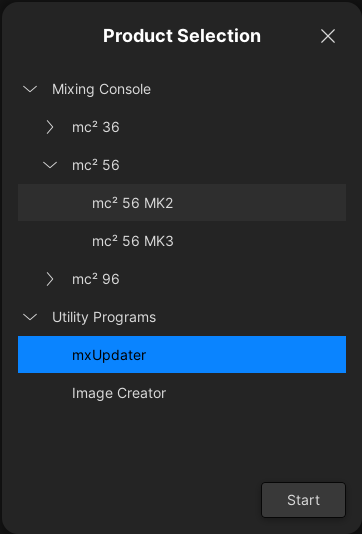
The program opens with an empty window.
3. Under "1 - Select Remote System", enter the IP address of the mc2 control system and click on Connect.
If you have connected to a system previously, then its IP address can be selected from the drop-down list.
After a successful connection you will see some information about the system in the mxUpdater window.
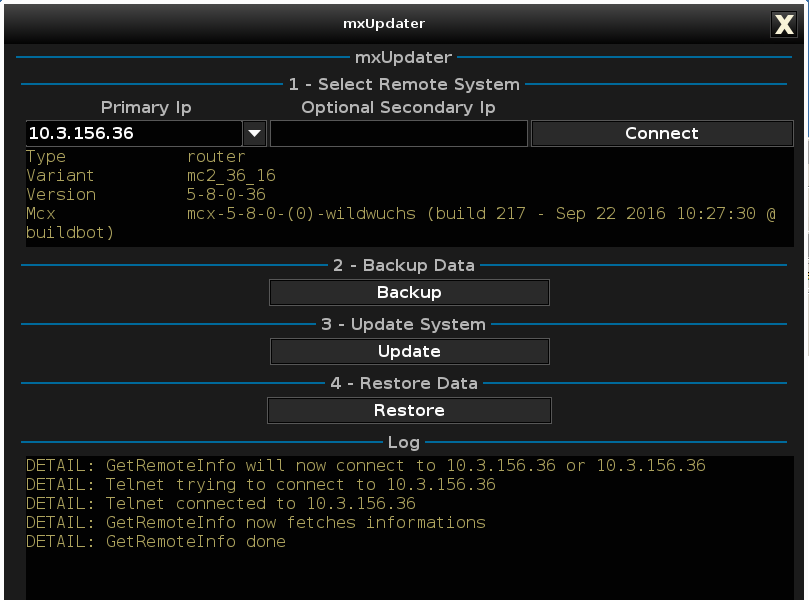
and the following files in the mxgui_config_share folder.
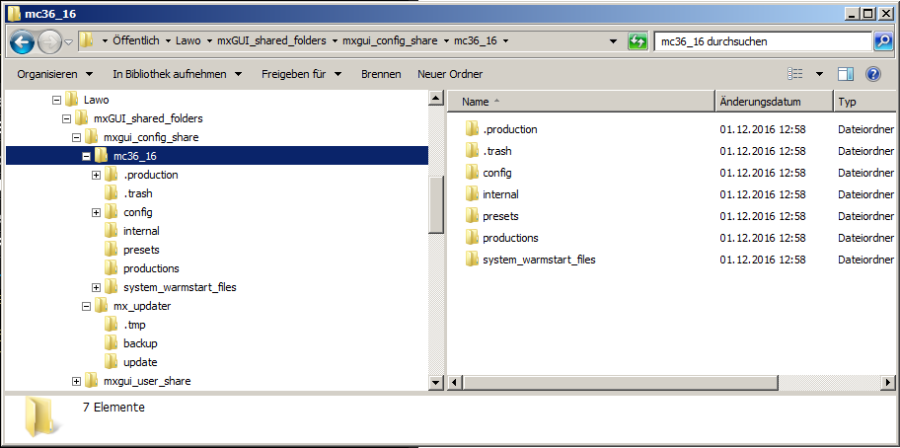
4. You can now choose one of the following functions:
2. Backup Data - make a backup of the system's user data.
3. Update System - update the system software.
4. Restore Data - restore the system's user data.
The rest of this topic describes each function in more detail.
User Data Backup
This function can be used to make a copy of the user data flashcard so that it can be restored at a later time. It is recommended to always save a backup before updating the software.
1. Under "2 - Backup Data", select Backup.
2. Enter a file name and then start the backup by clicking on Save.
Once the backup is complete, you will see the line DETAIL: Backup operation done in the "Log" area.
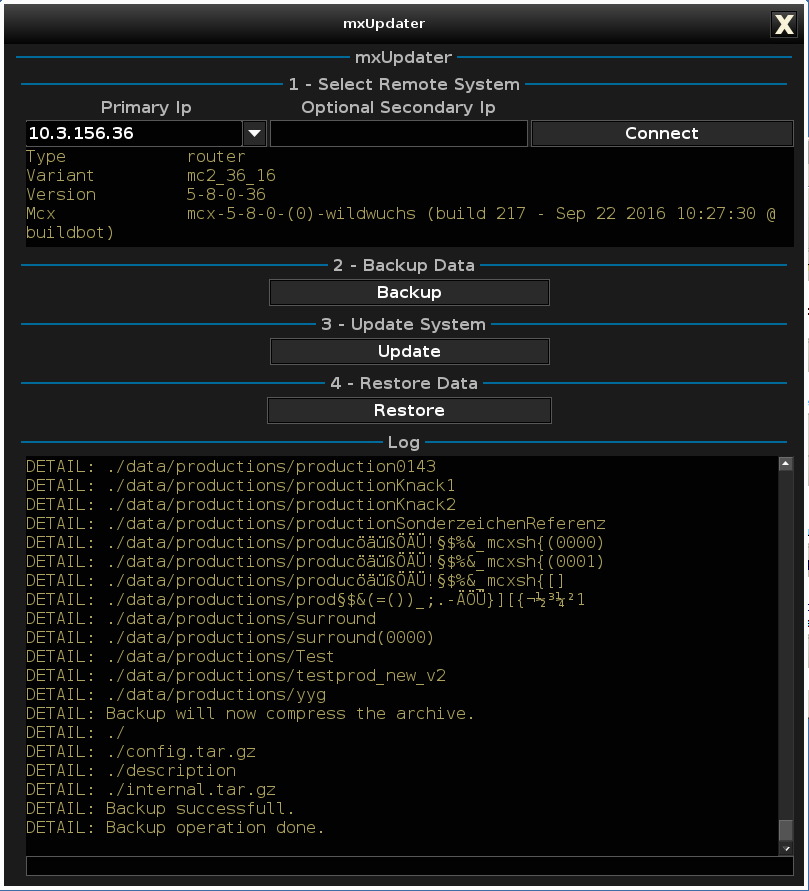
The backup file is stored on the mxgui computer in the mxgui_config_share -> mxupdater -> backup folder:

User Data Restore
At any time you can use one of your backup files to restore the system's user data.
Important: This operation will overwrite all existing data on the data flashcard, including productions and configuration files. Therefore, it is a good idea to make a backup of the current user data (as described above) before beginning a restore.
1. Under "4 - Restore Data", select Restore.
2. Select one of your backup files and click on Load.
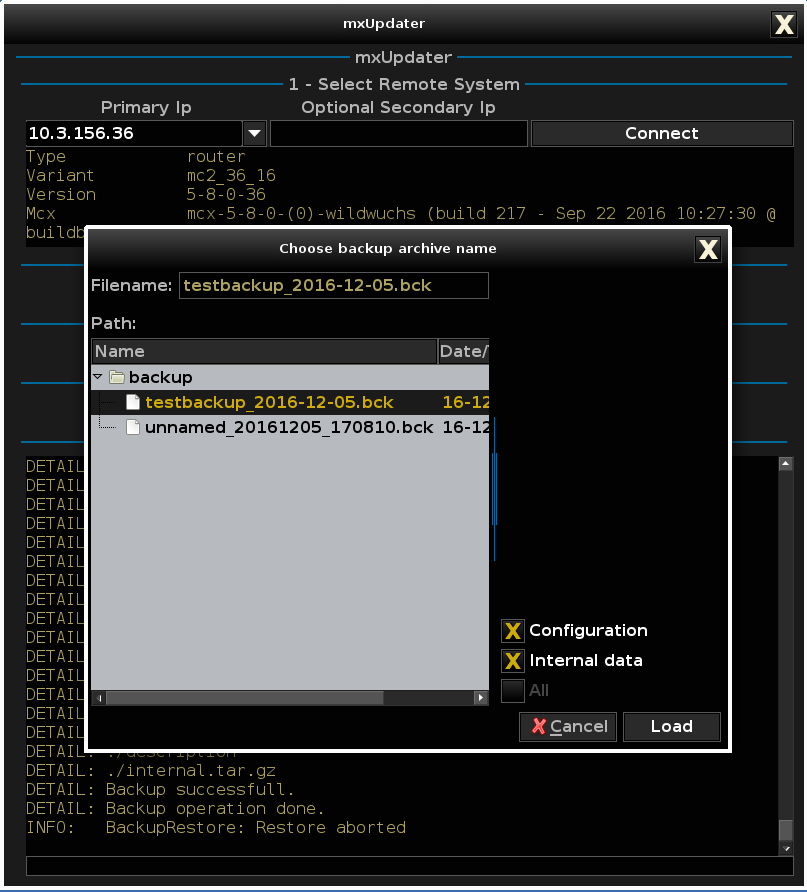
3. Confirm the restore by clicking on OK.
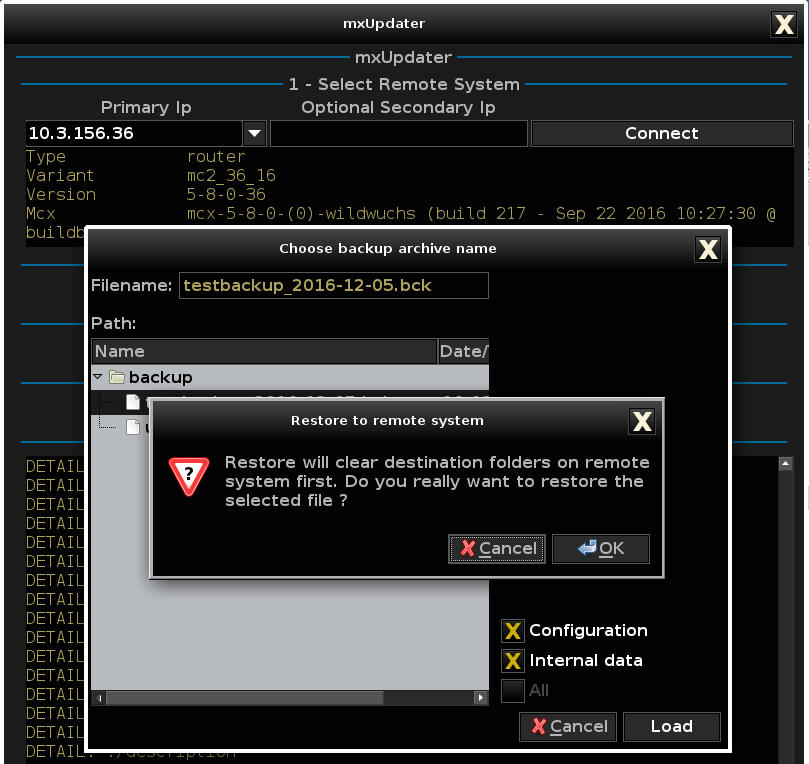
Once the restore is complete, you will see the line DETAIL: Restore operation done in the "Log" area.
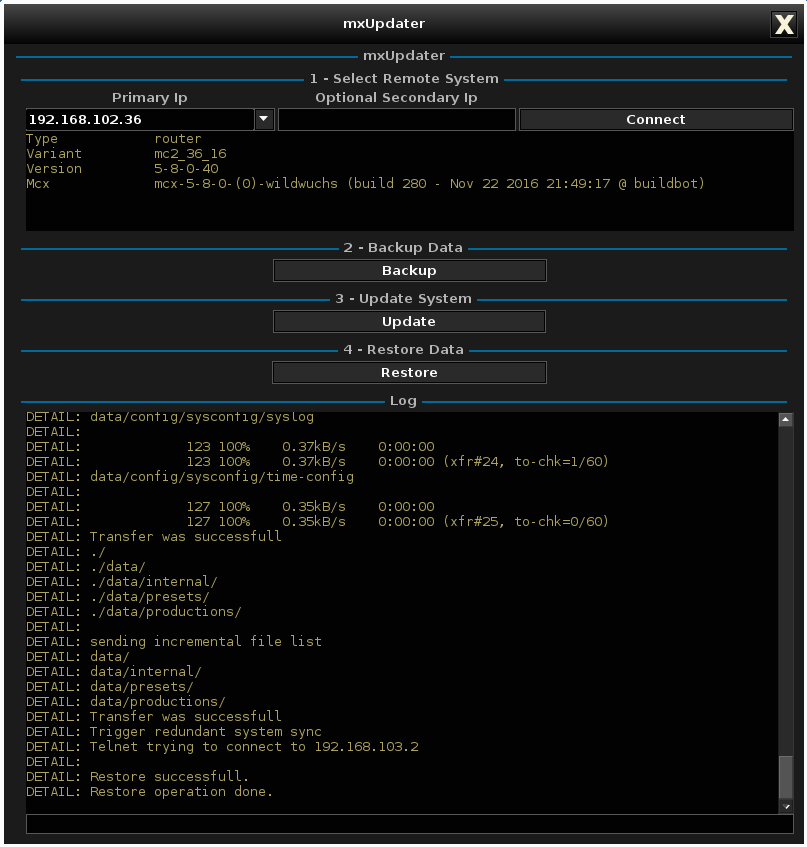
mc2 Software Update
mxUpdater can be used to update the mc2 system to the version that is concurrent with the mxGUI release. Before using this option, it is recommended that you save a backup of all user data (as described above).
1. Under "3 - Update System", select Update.
2. Confirm the update by clicking on OK.

You will now see the progress of the upload, update and validation steps in the "Log" area. Once the update is complete, a system reboot is triggered:

Note that the last few "Log" lines, including ERROR: Could not connect and ERROR: Update failed, remote aborted, are a result of the reboot. These lines are normal and can be ignored.
3. After the reboot, the software update is complete.